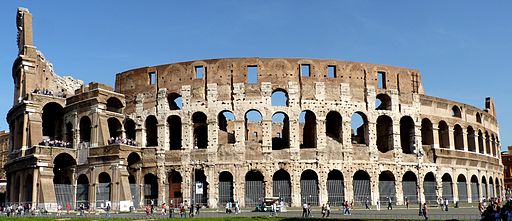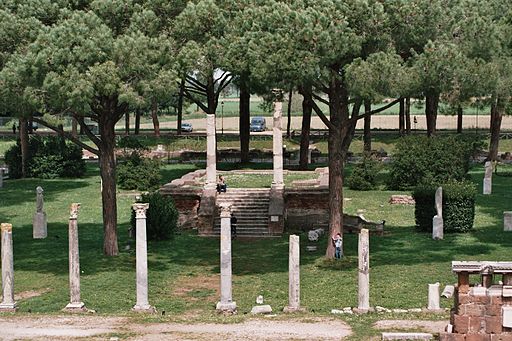 The ancient Romans were better at making concrete than we are today. According to a recent study by the US Department of Energy at Berkeley Lab, researchers have finally figured out how they made it.
The ancient Romans were better at making concrete than we are today. According to a recent study by the US Department of Energy at Berkeley Lab, researchers have finally figured out how they made it.
First, what is concrete? According to this informative website, it’s an artificial building material that’s a combination of an aggregate (such as chunks of stone, rubble, broken bricks) plus a binding agent (such as lime or gypsum), and water. Builders slather it on in its wet phase, and then it dries and sets and hardens.
The binding agent in modern concrete is “cement” or “Portland cement,” which is manufactured from natural stuff. The term “reinforced concrete” refers to concrete that has been strengthened with steel bars. The Romans didn’t use reinforced concrete.
The special binding agent in Roman concrete (opus caementicium) was a volcanic dust called Pozzolona.
 What’s fascinated researchers for so long is how the Roman concrete that was used to build harbors—submerged in sea water—managed to survive two thousand years, when Portland cement gives out after fifty. An analysis of the mineral components in Roman concrete dating to 37 BC reveals the recipe. According to the researchers’ press release “The Romans made concrete by mixing lime and volcanic rock. For underwater structures, lime and volcanic ash were mixed to form mortar, and this mortar and volcanic tuff were packed into wooden forms. The seawater instantly triggered a hot chemical reaction. The lime was hydrated – incorporating water molecules into its structure – and reacted with the ash to cement the whole mixture together.”
What’s fascinated researchers for so long is how the Roman concrete that was used to build harbors—submerged in sea water—managed to survive two thousand years, when Portland cement gives out after fifty. An analysis of the mineral components in Roman concrete dating to 37 BC reveals the recipe. According to the researchers’ press release “The Romans made concrete by mixing lime and volcanic rock. For underwater structures, lime and volcanic ash were mixed to form mortar, and this mortar and volcanic tuff were packed into wooden forms. The seawater instantly triggered a hot chemical reaction. The lime was hydrated – incorporating water molecules into its structure – and reacted with the ash to cement the whole mixture together.”
It’s also way more environmentally friendly to produce. And evidently there are sources of pozzolan—volcanic ash—all over the world.
The Monty Python blokes may well ask, “What have the Romans ever done for us?”